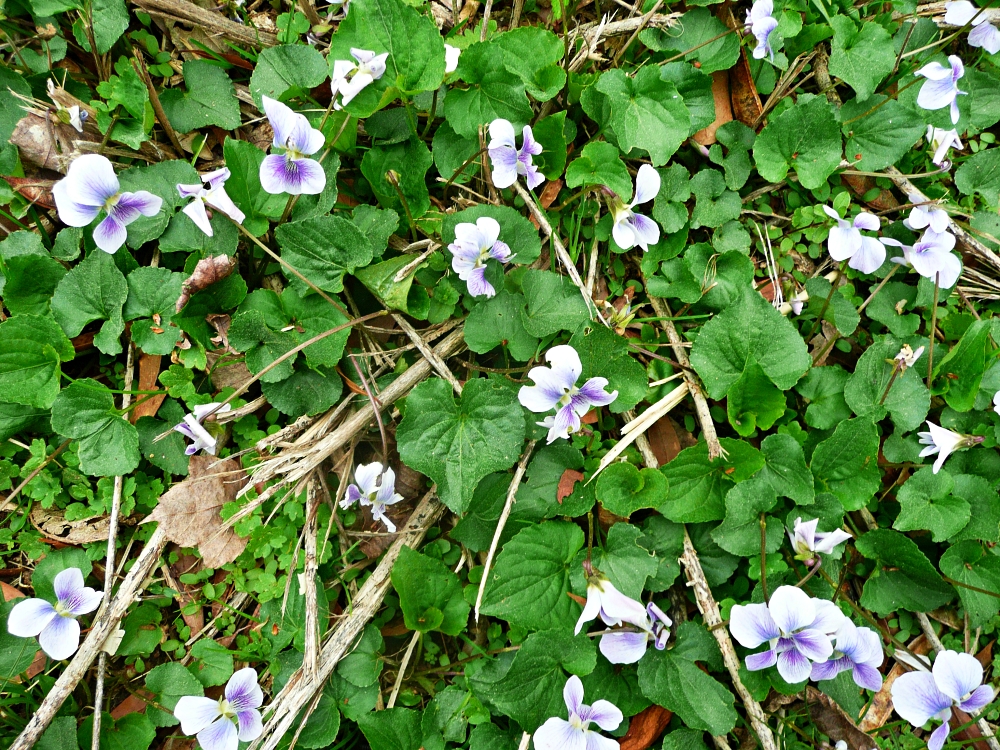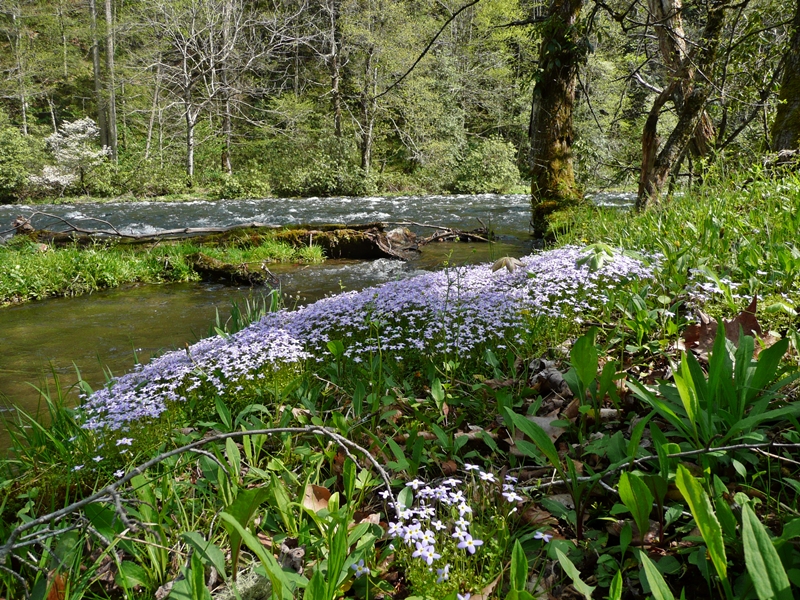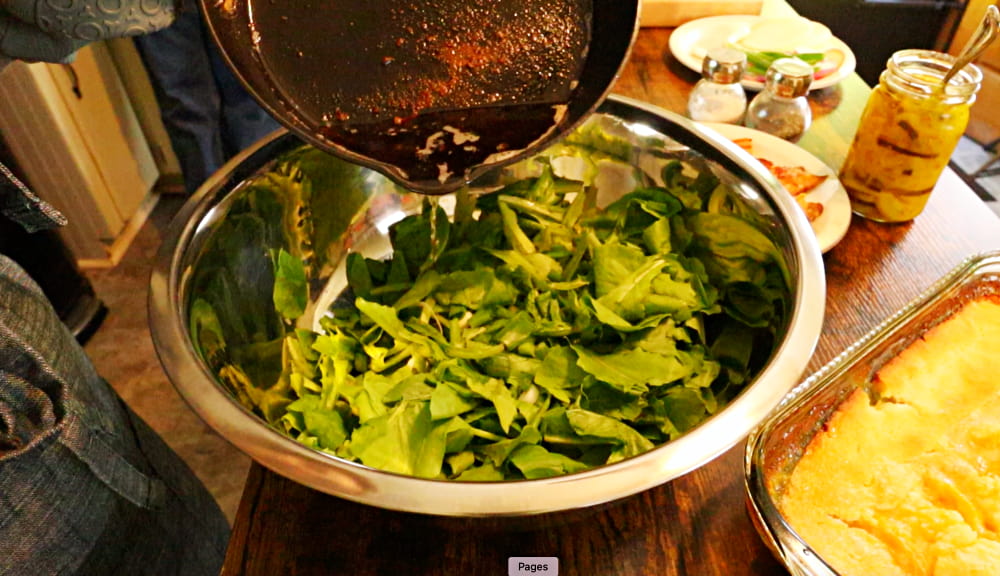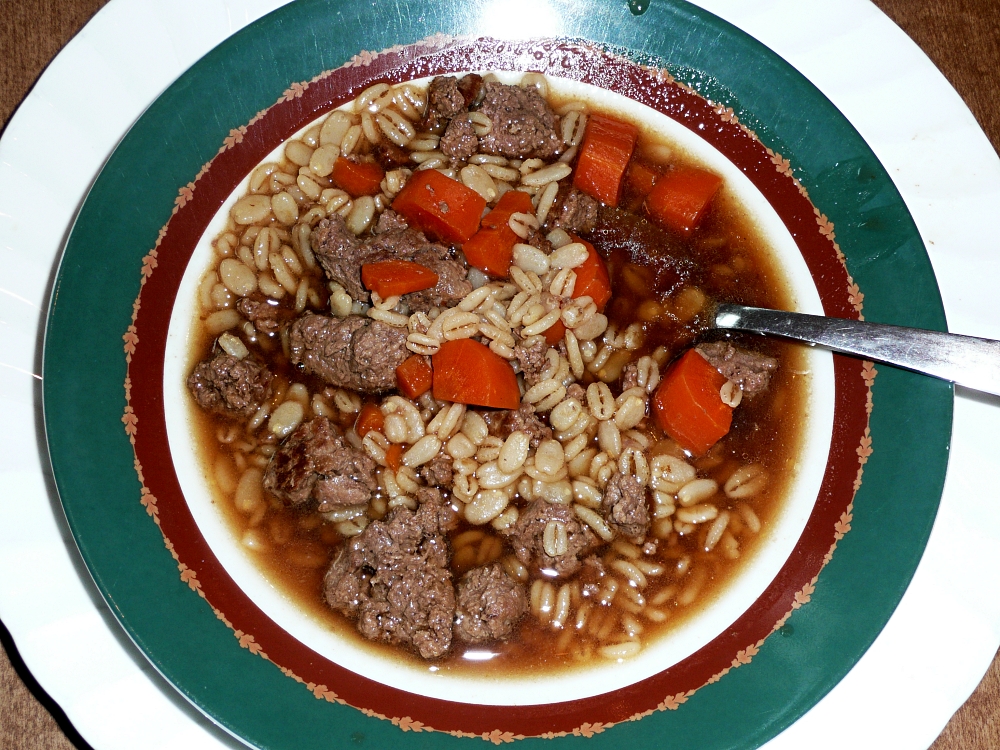THE MAGIC AND MADNESS OF MARCH
I’m always tickled when the month of March rolls around. It means all sorts of good things; foremost among them being that I’ve said goodbye to another February. In days gone by, when I was a whole lot “cattier” than I am today (for those unversed in Smoky Mountain English, “catty” means agile) it translated to casting to rising trout being just around the corner. Now, thanks to balance problems that seem to be one of the attributes of advancing years, along with a decided lack of sensitivity in my feet, tackling trout is something I am able to do primarily in dreams. March also means gobbling and strutting turkeys, and come the first day in April I plan to be in the woods at first light to match wits with America’s big-game bird. That’s a matter of uncertainty when the occasional day is a sparkling diamond but many more offer coal if you measure such things in hunting success. Incidentally, I don’t, because the greening-up woods of spring and simply being afield are magic in and of themselves. Of course there’s madness as well, and any die-hard turkey hunter knows exactly what I mean. For the rest of you, practical advice would probably go along the lines of “don’t start, it’s as addictive as opiates.” However, I would hasten to add that, addictive or not, it puts pep in one’s step and when you hear a distant gobble spirits surge in a fashion that has to be experienced to be really appreciated.

March, at least in my part of the world, also brings blooming wildflowers, poke salad, and dandelion greens. It’s time to get spring crops in the ground if they haven’t already been planted. It is also a moment to shout hallelujah to the beginning of the end to winter. Mind you, I have no doubt whatsoever that there are bitter breezes, possibly a killing frost, and certainly chilling rains yet to come before spring truly arrives. Nonetheless, here in upstate South Carolina daffodil blooms have come and are mostly gone, buds on red maples have swollen, and the latest generation of bluebirds are checking out a backyard box my late father made more than three decades ago with a far more serious mien than is the case in their periodic stop-and-look ventures during the winter.
My Grandpa Joe used to describe March as a month of hope and renewal, although those might not have been his exact words. There was, however, no doubt about his general sentiments. “It’s really a pretty miserable month,” he would opine, “because hunting season is closed, it’s far too cold to fish for trout (that was in the days when everyone waded wet), and more often than not the weather is ornery. Still, March means that April and May aren’t far away, and just thinking of them lifts my spirits. First thing you know we’ll have a mess of black-seeded Simpson lettuce from the garden, and by the end of the month anyone with a decent amount of gumption can gather a bait of dandelion greens.”
Warming to his subject, Grandpa Joe would then reminisce about memorable experiences from his past associated with this general time of year—a late March snowstorm, “yarbing” (gathering herbs such as yellowroot and bloodroot for medicinal use or sale), making sweet syrup from maples or birch trees (we think of that as something confined to more northern climates, but “tree sweetening” was once fairly common in the Smokies), and the like.
One of the things about March which fascinated me then as much as it does now was planning connected with planting gardens. Grandpa firmly believed in planting by the signs, and to that end he studied the Farmer’s Almanac and considered it absolute gospel. If the signs weren’t right seed potatoes would not go into the ground; and if the Almanac said it was a time for root crops to go the ground, then things like cabbage and broccoli would just have to wait their turn. I must confess that I think Grandpa was onto something. I don’t always plant by the signs, but his resounding and consistent success was such it pretty well shredded any arguments about planting when the spirit happened to move you. Still, I must confess that the most powerful of the signs I tend to heed are when the ground is dry enough to till and I’ve got sufficient gumption to be out and about.
Another fond memory from those long ago days focused on Grandpa’s discussion of turkeys. I never saw one of the grand birds until long after he was gone (he died when I was 25 years of age, and his passing came in February, the month he liked least of all), but I had read about them in the writings of one of my boyhood literary heroes, Charlie Elliott. Grandpa talked about the special sound gobblers made in the mating season, and according to him, “once you hear it you realize a bird can shake the ground and stir the soul.” Was he ever right on this score, as was the case on so many other things!

It won’t be long until the rites of the spring woods once more arrive, and already thoughts of being in the woods at dawn move me to the depths of my soul. But then, so do simpler pleasures connected with early spring. To walk through woodlands where service trees add a splash of white to a grim, grey landscape, is to tread through wonder. The same holds true for glimpses of the first flowering bluets, bloodroots peeking through leaf mold, the shiny green of emerging Mayapple leaves, and the bright pink of swelling redbud blooms. Early spring uplifts in so many ways, and as I grow older I enjoy the profusion of wildflowers, a parade of color which becomes more beautiful as March gives way to April, and April to May, even more than I used to. Or maybe it would be more accurate to say that in the turkey woods or just wandering, I pause and ponder a bit more than used to be the case.
Another aspect of March that I have always cherished is associated with the old mountain custom of taking “tonics” in this month. These took many and varied forms, from sulphur and molasses to thin the blood to infusions of sassafras tea for one’s general health. Spring greens such as poke salad did double duty as a purgative, and even after poke has been boiled and drained at least two and preferably three times before consumption, a big bait of the wild vegetable will still, to borrow once more from Grandpa Joe’s delightful if sometimes a bit earthy description, “set you free.” Or, to put it another way, Metamucil can’t hold a candle to a good mess of poke salad.
There were always some who thought even the most nauseous of nostrums could be rendered palatable by being taken with a good slug of peartin’ juice (for the uninformed, that’s moonshine, or golden moonbeam, or snakebite medicine, or any of a half dozen more descriptive terms). Not too long prior to his untimely arrest and subsequent suicide, I had the opportunity to discuss such matters with the late Popcorn Sutton. He was a genuine mountain character and lifelong producer and purveyor of corn squeezin’s. Popcorn’s studied opinion was that “a body needs some properly made likker, along with a mess of trout and bait of ramps and branch lettuce,” to get into spring in proper fashion. Incidentally, if you’ve never heard of this fascinating character and are interested in the culture of moonshine making, you might want to poke around on the Internet a bit.
I’m not sure Popcorn’s spring tonic was the best, although I will acknowledge that a year or so before his death I acquired a couple of pint jars of his “cherries” and set them aside for special occasions. Those special moments have come and gone, just like Popcorn. He’s become something of a folk hero, and I can’t deny that there was a certain element of fascination to the man. However, on the whole I’m not overly given to hero worship and in the balance reckon him to have been a rather sordid and unsavory character. Feel free to disagree, but I would note that while some who lived in and around his Maggie Valley stomping grounds admired him, others had nothing whatsoever good to say about the man.
I’m not sure just how I ran into that rabbit hole, but to return to the main theme, March is a month for some fine late winter eating. In fact, I’m going to take a short break to get some venison stew meat thawing before getting it going in the crockpot for a savory marriage with potatoes, carrots, and onions, and merely thinking to the end result, accompanied by a chunk of hot, buttered cornbread, has my salivary glands threatening to run amok.
March is a time for some freezer cleaning out, a month for hearty soups, and a time for the simple pleasures of good eating. In the past week I’ve had soup pretty every day—a hearty potato soup I make, along with venison vegetable soup, split pea and ham soup, and more. I can eat it once a day in colder weather and be happy as a hog wallowing in mud hole on a hot July day. Yeah, I know the linkage of scrumptious soups and stews with odiferous swine makes for a somewhat unusual analogy, but it’s my newsletter so I get to do such things.
****************************************************************************
THIS MONTH’S BOOK SPECIALS
I recently devoted a fair amount of time to cataloging all of the many Archibald Rutledge items (mostly books) I have for sale. They range from inexpensive good reads to highly collectible items linked to this outdoor and nature writer of enduring appeal. You can view all the offerings by visiting my website (www.jimcasadaoutdoors.com), clicking on the link to books, and then on the link to Archibald Rutledge. One thing I can guarantee—if you haven’t read material from the sage of the Santee you’ll find his writings an exercise in pure delight.
******************************************************************************
JIM’S DOIN’S
Most of my time in recent weeks has been devoted to an effort to complete the manuscript of a book I’ve worked on, from time to time, for the better part of a decade. It is a collection of profiles of 37 mountain characters, all of whom, in decidedly varied fashions, capture one or more aspects of the distinctive appeal and folkways of the Appalachian high country of my birth and raising. The work is divided into four sections—“Branch-Water People,” “Pillars of Mountain Life,” “Rascals, Rogues, and Rounders,” and “Outlanders.” In each chapter I attempt to delve, fairly deeply, into the life of the individual being covered and in so doing share anecdotes, tidbits of history, folksy tales, and the like emblematic of a vanishing way of life. Only a handful of the individuals achieved an appreciable level of fame or notoriety, but almost all are representative of several traits mountain folks not only exhibit but cherish in others—strength of character, individuality, eccentricity, a staunch work ethic, mule-headedness, a deeply embedded streak of warmth (sometimes well hidden), and more. There are moonshiners and sportsmen, poor dirt farmers and key figures in the creation of the Great Smoky Mountains National Park, patriots and politicians, centenarians and codgers, sportsmen and simple souls, along with others. The working title of the book is “Profiles in Mountain Character: People from the Portals of Paradise,” although that may well change (publishers often have the ultimate voice in selecting a title). If you would like to be notified when it appears, and that’s likely two years or so down the road, drop me an e-mail (jimcasada@comporium.net) and I’ll be sure to let you know.
As far as publications go, my recent weekly columns in the Smoky Mountain Times, the little newspaper serving my home stomping grounds of Bryson City and Swain County, have focused on the general theme of “Those Were the Days.” They include a look at the era of my earlier boyhood and the Depression years my parents knew as young adults and are now delving into the general nature of my high school classmates and the directions their lives took. Recent publications include “Nearly Time to Garden,” “Smoky Mountain Living” (on-line), Mar. 15, 2024; “Cornbread’s World of Wonders,” Smoky Mountain Living, April/May, 2024, pp. 16-19; and “Annabel Means Adventure,” Sporting Classics, 2024 Adventure issue, pp. 100-02.
******************************************************************************
The recipes that follow touch a number of bases—a genuine treat if you are lucky enough to have some venison loins or backstraps left in your freezer and if not, a soup featuring ground deer meat; spring fare from nature’s rich larder; and a soup ideally suited for nestling down in comfort on a blustery, rainy day of the sort March often features.
LOIN STEAKS WITH RASPBERRY SAUCE
1 pound loin steaks
1/3 cup Dale’s Steak Seasoning
1/3 cup water
½ stick margarine or butter
1 garlic clove, minced
½ cup raspberry jam
Marinate loin in Dale’s Steak Seasoning and water; drain. Melt the margarine and add garlic; sauté briefly. Add loin and cook to desired tenderness. Remove loin and de-glaze pan with jam. Serve as a sauce over loin or for tipping loin.
“KILT” WILD GREENS

Harvest wild spring greens and vegetable such as dandelion leaves, watercress, branch lettuce (saxifrage), lamb’s quarter, ramps and the like. Wash clean and dry gently with a cloth or paper towel. Fry bacon strips until crisp, then crumble the bacon in the grease which has cooked out of the meat. If there is too much oil, strain some of it off. Pour the hot bacon and grease across the greens, add croutons if desired, and eat immediately. This is an old favorite in the Smokies, where I grew up.
POKE SALLET
Gather a good mess of the ender young shoots of poke weed. Wash the shoots and then bring a pan of water to a rolling boil before adding the poke. Bring it back to a boil and then pour off the water. Repeat the process. Drain a second time and the third time add some streaked meat (fatback) and simmer gently. If desired, top with slices of boiled egg when served, and add salt and pepper to taste.
BARLEY VENISON SOUP

1 cup fine barley, rinsed and drained
1 small onion
4 cups beef broth
3 cups frozen mixed vegetables, thawed
1 can (46-ounce) tomato juice
3 or 4 cups leftover venison stew or browned venison burger
1 teaspoon sugar
Salt and pepper to taste
Bring broth to a boil and add washed barley, chopped onion and frozen vegetables. Cook on low about 40 minutes until barley and veggies are done. Add tomato juice, venison, and seasonings. Simmer until piping hot.
Great served with cornbread.
BLACK BEAN SOUP
2 cups black beans, cleaned, rinsed and soaked
6 cups cold water
2 cups chicken broth
1 medium onion, chopped
1 garlic clove, minced
2 tablespoons margarine
2 bay leaves
2 tablespoons parsley
1 ham hock
1-2 cups venison kielbasa or smoked venison sausage, finely chopped
Salt and pepper to taste
Soak beans, then drain. Fill Dutch oven with ham hock, beans, water and broth. Cook on low until beans are tender. Sauté garlic, onion, and parsley in margarine and add to soup along with other ingredients. Continue cooking over low heat until beans are soft (about three hours). Add small amount of water if the soup becomes too thick. Remove bay leaves and hock, chopping ham from the latter into small pieces. Garnish with shredded cheddar cheese, sour cream, and chopped onion.